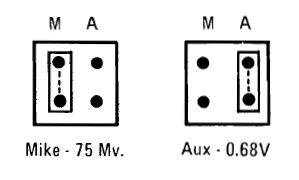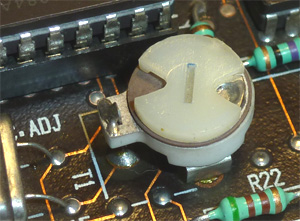| Switch 1: |
| OFF: |
5150 has one or more floppy drives |
| ON: |
5150 has no floppy drives |
|
• The ON setting was used for the floppy-less 5150s that IBM offered. |
| Switch 2: |
| OFF: |
8087 math co-processor chip is installed |
| ON: |
8087 math co-processor chip is not installed |
|
• Some IBM documentation has this wrong.
• 8087 sits in IC socket U4, adjacent to keyboard connector J7.
|
| Switches 3 and 4: |
Installed motherboard RAM.
| 3=ON , 4=ON : |
Only bank 0 populated |
| 3=OFF, 4=ON : |
Only banks 0/1 populated |
| 3=ON , 4=OFF: |
Only banks 0/1/2 populated |
| 3=OFF, 4=OFF: |
Banks 0/1/2/3 populated |
|
• In a 5150, these switches do not enable/disable RAM. They inform the BIOS of bank population.
• Click here to see a diagram that shows the four RAM banks.
• If the 10/27/82 dated BIOS revision is fitted, bugs in that
BIOS require that all four RAM banks be populated.
|
| Switches 5 and 6: |
Video card type.
| 5=OFF, 6=OFF: |
MDA (monochrome) |
| 5=OFF, 6=ON : |
CGA, at 40 column by 25 line mode |
| 5=ON , 6=OFF: |
CGA, at 80 column by 25 line mode |
| 5=ON , 6=ON : |
Cards with a BIOS expansion ROM (e.g. EGA / VGA) |
|
• Assumption: Only one video card fitted.
• ON/ON setting is only useable for the 10/27/82 dated BIOS revision.
• For VGA card compatibility, click here. |
| Switches 7 and 8: |
Floppy drive count. Used if switch 1 is OFF.
| 7=ON , 8=ON : |
One floppy drive |
| 7=OFF, 8=ON : |
Two floppy drives |
| 7=ON , 8=OFF: |
Three floppy drives |
| 7=OFF, 8=OFF: |
Four floppy drives |
|
• The IBM 5.25" Diskette Drive Adapter supports double density drives only. |

